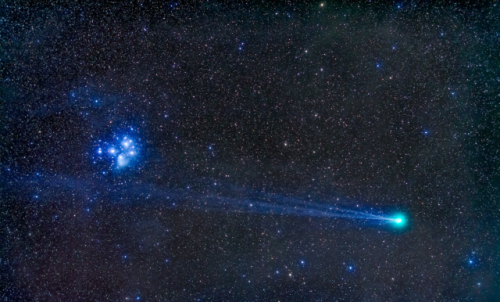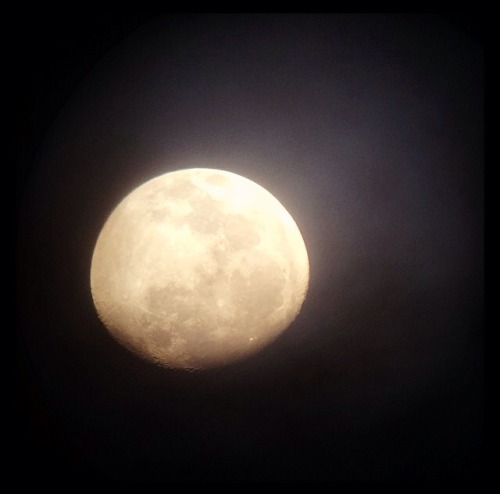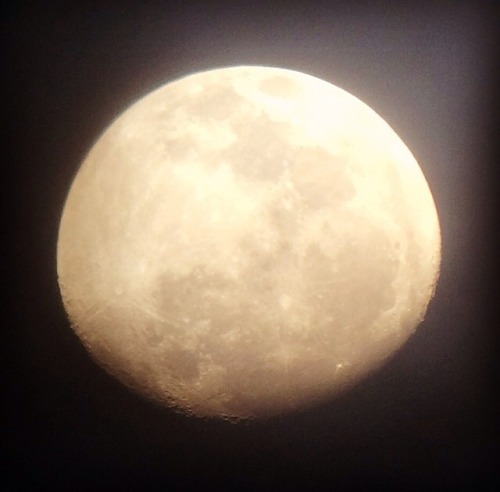Hubble’s Bubble

Hubble’s Bubble
To celebrate 26 years in space, Hubble has captured this magnificent view of NGC 7635, better known as the Bubble Nebula. The “bubble” is created by the stellar wind from a hot, young central star that is 10-20 times the mass of our Sun.
More Posts from Xnzda and Others

The orbit of Jupiter protects the Earth from asteroids.
So it turns out, Pluto is red.

What color is Pluto? If you search for the dwarf planet on Google, images suggest that it’s a sort of steely blue or gray color. But now, NASA’s New Horizons spacecraft is closing in on it, and has learned Mars isn’t the only red planet in our solar system. But the reason it’s red couldn’t be more different from Mars.

Antennae galaxies, an intense star-forming region created when two galaxies began to collide some 200 million to 300 million years ago. The bright, blue-white areas show newly formed stars surrounded by clouds of hydrogen, which are colored pink. A similar collision is expected between our galaxy, the Milky Way, and the nearby Andromeda galaxy in several billion years.
Source: national geographic
Credit:NASA/ESA/HUBBLE
on the first day of class my astronomy professor asked us why the night sky was dark. if our universe is infinite, how can there be spaces between the stars? he didn’t answer the question until the last day– because our universe is relatively young, and is still growing. it is finite. not enough stars or galaxies have been formed to fill up the entire night sky.
but what that means to me is that somewhere, in an older universe, the night sky looks like a tapestry of diamonds. somewhere darkness is pale white and glittering. imagine being so surrounded. i haven’t gotten that image out of my head ever since– you could never navigate under such a sky but god it sounds lovely

Grand Spiral Galaxy - M 100
Known as a grand design spiral galaxy, M100 is a large galaxy of over 100 billion stars with spiral arms that are like our own Milky Way Galaxy. This Hubble Space Telescope image of M100 was made in 2009 and reveals bright blue star clusters and intricate winding dust lanes which are hallmarks of this class of galaxies. Studies of variable stars in M100 have played an important role in determining the size and age of the Universe.
Credit: NASA/APOD

The Infrared Visible Andromeda: This remarkable synthetic color composite image was assembled from archives of visible light and infrared astronomy image data. The field of view spans the Andromeda Galaxy are also included in the frame. via NASA
js
-
 momworksarighrea liked this · 1 year ago
momworksarighrea liked this · 1 year ago -
 sicu-me liked this · 3 years ago
sicu-me liked this · 3 years ago -
 marialeecollectorfan reblogged this · 4 years ago
marialeecollectorfan reblogged this · 4 years ago -
 wolf-beil reblogged this · 4 years ago
wolf-beil reblogged this · 4 years ago -
 nib333 liked this · 5 years ago
nib333 liked this · 5 years ago -
 ornellamutte reblogged this · 5 years ago
ornellamutte reblogged this · 5 years ago -
 ornellamutte liked this · 5 years ago
ornellamutte liked this · 5 years ago -
 yakutyanochka liked this · 5 years ago
yakutyanochka liked this · 5 years ago -
 xnzda reblogged this · 5 years ago
xnzda reblogged this · 5 years ago -
 etrnty-a liked this · 6 years ago
etrnty-a liked this · 6 years ago -
 ravinchef liked this · 6 years ago
ravinchef liked this · 6 years ago -
 tracebacktheseconds liked this · 6 years ago
tracebacktheseconds liked this · 6 years ago -
 wiley-wook-wizard liked this · 6 years ago
wiley-wook-wizard liked this · 6 years ago -
 valsude reblogged this · 6 years ago
valsude reblogged this · 6 years ago -
 valsude liked this · 6 years ago
valsude liked this · 6 years ago -
 imperialregent reblogged this · 7 years ago
imperialregent reblogged this · 7 years ago -
 imperialregent liked this · 7 years ago
imperialregent liked this · 7 years ago -
 omgalexgabrielworld liked this · 7 years ago
omgalexgabrielworld liked this · 7 years ago -
 decorativ liked this · 7 years ago
decorativ liked this · 7 years ago -
 enbi-vegetto reblogged this · 7 years ago
enbi-vegetto reblogged this · 7 years ago -
 aquacanis liked this · 7 years ago
aquacanis liked this · 7 years ago -
 graywolf771 reblogged this · 7 years ago
graywolf771 reblogged this · 7 years ago -
 graywolf771 liked this · 7 years ago
graywolf771 liked this · 7 years ago -
 joaovitorbrustellosblog-blog liked this · 7 years ago
joaovitorbrustellosblog-blog liked this · 7 years ago -
 noodlekru liked this · 7 years ago
noodlekru liked this · 7 years ago -
 the-parny liked this · 7 years ago
the-parny liked this · 7 years ago -
 locklear81-blog liked this · 7 years ago
locklear81-blog liked this · 7 years ago -
 superjerrydaniel342 liked this · 7 years ago
superjerrydaniel342 liked this · 7 years ago -
 xeldablade reblogged this · 7 years ago
xeldablade reblogged this · 7 years ago -
 spri-ngdays reblogged this · 7 years ago
spri-ngdays reblogged this · 7 years ago -
 lureofthesea liked this · 7 years ago
lureofthesea liked this · 7 years ago -
 1c1ouds reblogged this · 7 years ago
1c1ouds reblogged this · 7 years ago




